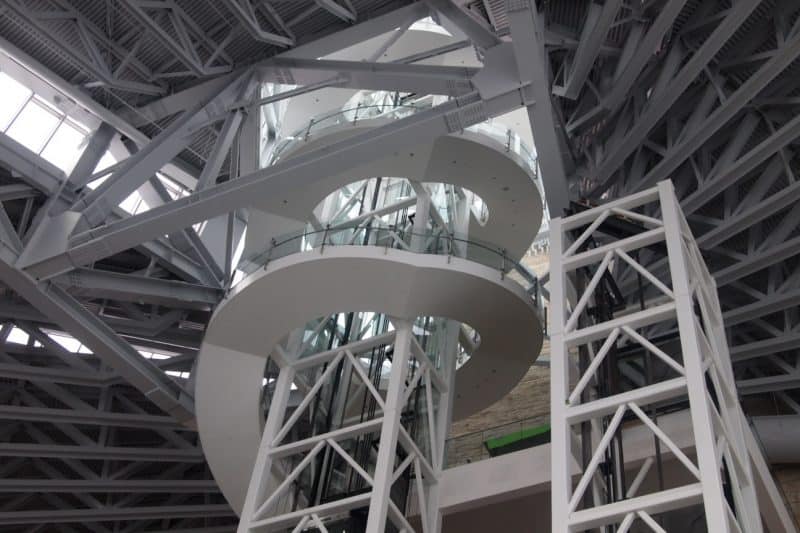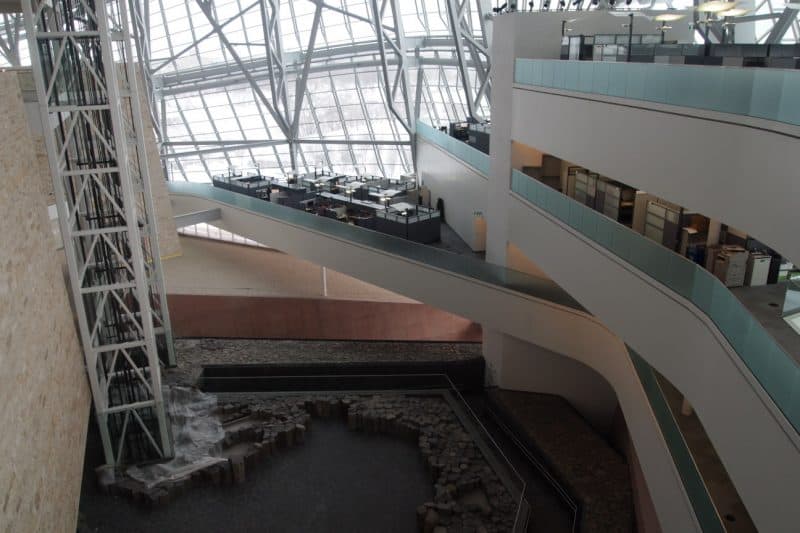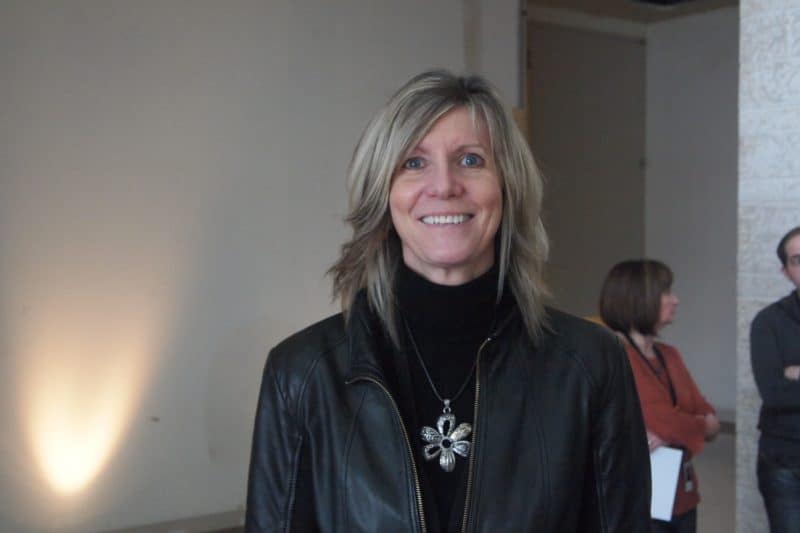Winnipeg’s Greatest Attraction Opens in September



Want to put a relatively small city on the map forever? Build a $351 million state-of-the-art interactive museum about human rights, and make the building so spectacular that it looks like nothing ever built before.
That’s what’s happening in Winnipeg and the big party happens this September.
I got a chance to tour the Canadian Museum for Human Rights building this morning and peek into some of the areas where the exhibits about human rights around the world will be located. Meanwhile, there are already working offices for many of the programmers that are up above the first level, with a 150 foot tall ceiling. Maureen Fitzhenry, the museum’s Media Relations director showed me some of the renderings of what the museum will look like.
This is truly a 21st century model for a museum. It will be very interactive, and showcase current world situations where human rights are being violated, and there will be ways people can have dialogue among themselves in the museum to explore how rights get trampled on. It won’t be pointing fingers or accusing, it’s point is to enhance the public’s understanding of human rights to promote respect for others.
The building sits like a big swirling circle on four stone roots. A tower of hope rises 100 meters high, and inside, the most expensive detail are incredibly long ramps covered with Spanish alabaster, that museum visitors will walk through on their way to the tower.
The site where the building was built is an ancient meeting place for Aborigines, and more than 400,000 artifacts were recovered when the foundation was dug. There will be stations where people can tell their personal stories from around the

world relating to human rights with more than 100 hours of video, 512 video clips and seven separate theaters.
I remember visiting France’s newest museum, the Louvre-Lens built in 2012 in a run down town in the north of the country. It has already blown way past its initial anticipated visitor goal, and has rejuvenated its host city along with the entire north of the country.
This museum will be one of six national museums in Canada, and it’s appropriate to be located in Winnipeg, home to Canada’s largest urban Aboriginal population. But it will be about more than just Canada’s people, it will cover the world.
In five or ten years, this museum will probably be a place that not only will every Canadian school child will visit, but it will be a meeting place for thousands of people from around the world to explore the topic of human rights and to work out differences between peoples in these inspiring rooms.
